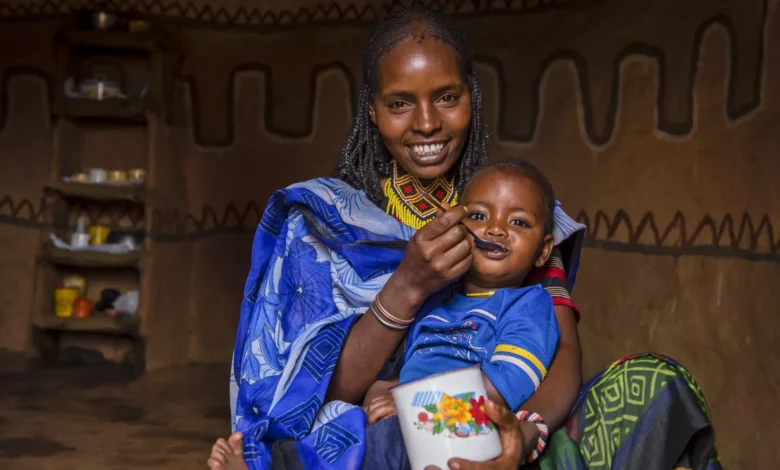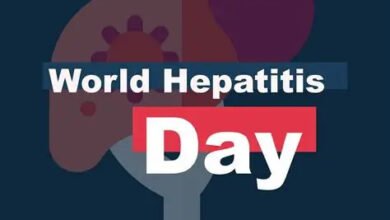Malnutrition in Children: A Global Crisis Demanding Urgent Action

In the earliest years of life, beginning from conception through infancy and into childhood, a child’s body and brain undergo profound development. Nutrition during this critical period is not just about food; it is the foundation upon which a child’s future health, intelligence, and productivity are built. Yet, millions of children across the globe are deprived of this basic necessity, and the consequences are devastating.
The Scope of the Crisis
According to the latest reports by the United Nations, malnutrition remains one of the gravest challenges of our time. Nearly 45 million children under the age of five are currently wasted, meaning their weight is too low for their height. This condition, along with stunting (low height for age), underweight, and micronutrient deficiencies, significantly increases the risk of death and chronic illness. Despite progress in reducing child mortality over the decades, one child or adolescent still dies every 4.4 seconds, totaling approximately five million deaths annually, many of which are linked to malnutrition.
Malnutrition is not limited to lack of food. It encompasses both under-nutrition and over-nutrition, and arises from poor diets, disease, inadequate care practices, and weak health systems. It is both a symptom and a cause of poverty, inequality, and conflict.
Understanding Malnutrition
The term “malnutrition” broadly refers to imbalances in energy and nutrient intake. It includes:
1. Undernutrition
-
Stunting – Low height for age, indicating chronic undernutrition.
-
Wasting – Low weight for height, often resulting from acute food shortage or disease.
-
Underweight – Low weight for age.
-
Micronutrient Deficiencies – Often referred to as “hidden hunger,” this includes deficiencies in essential vitamins and minerals like iron, iodine, and vitamin A.
2. Overnutrition
-
Overweight and Obesity – Excess weight relative to height, increasingly prevalent even among children in low-income settings due to poor-quality diets.
-
Non-communicable diseases – Such as diabetes and cardiovascular conditions, which are increasingly affecting children due to poor dietary habits and sedentary lifestyles.
A Crisis Fueled by Conflict, Climate, and Cuts
The 2025 Global Report on Food Crises paints a dire picture: over 295 million people in 53 countries faced acute food insecurity in 2024, with 38 million children under five acutely malnourished in 26 countries. Conflict remains the top driver, affecting nearly 140 million people across 20 countries, including Sudan, Gaza, South Sudan, Haiti, and Mali, many of which are on the brink of or already facing famine conditions.
Economic shocks, particularly post-COVID inflation, currency devaluations, and reduced purchasing power—have pushed an additional 59.4 million people into food crises. Meanwhile, extreme weather, exacerbated by climate change, has disrupted agriculture and livelihoods in 18 countries, with El Niño-induced droughts and floods compounding the crisis across Southern Africa, Southern Asia, and the Horn of Africa.
To make matters worse, global humanitarian funding is declining at an alarming rate. The steepest projected drop in food assistance budgets, between 10% and 45%—threatens to undermine progress and deepen suffering in the most vulnerable regions.
The First 1,000 Days: A Window of Opportunity
Experts emphasize the importance of the first 1,000 days of life, from conception to a child’s second birthday as a crucial window for nutritional intervention. During this time, a healthy and balanced diet can prevent stunting, support cognitive development, and establish a strong immune system. Conversely, malnutrition during this window can lead to irreversible physical and mental impairment.
Yet, millions of children do not receive adequate nutrition due to poverty, inadequate breastfeeding practices, unsafe water, and poor sanitation. In many parts of the world, nutrient-rich foods such as fish, eggs, nuts, fruits, and vegetables are either unavailable, unaffordable, or culturally undervalued.
The High Cost of Inaction
-
Nearly 1 in 15 children in developing countries dies before the age of five, most from hunger-related causes.
-
An estimated 250 million preschool children lack enough vitamin A, leading to up to 500,000 cases of childhood blindness annually, half of which result in death within a year.
-
The number of children facing famine-like conditions has more than doubled to 1.9 million, the highest since global monitoring began.
Solutions: Prevention and Treatment
While the situation is urgent, it is not without solutions. To combat child malnutrition, we must prioritize:
-
Investment in nutrition-sensitive interventions (e.g., agriculture, education, water and sanitation).
-
Promotion of breastfeeding and age-appropriate complementary feeding.
-
Fortification of staple foods with essential vitamins and minerals.
-
Timely treatment of acute malnutrition using therapeutic foods.
-
Social protection systems to cushion the poorest families from economic shocks.
-
Stronger health systems and better maternal education and support.
-
Climate-resilient food systems to withstand environmental shocks.
Moreover, tackling child malnutrition requires political will, cross-sector collaboration, and sustained funding. It is not only a health issue but a matter of social justice and human rights.
Conclusion
Malnutrition is a crisis we have the knowledge, tools, and resources to end. What is required now is global commitment and local action. Every child deserves the right to thrive, not merely survive. As the world grapples with compounding crises, we must place children’s nutrition at the heart of our response, for their sake, and for the future of humanity.





